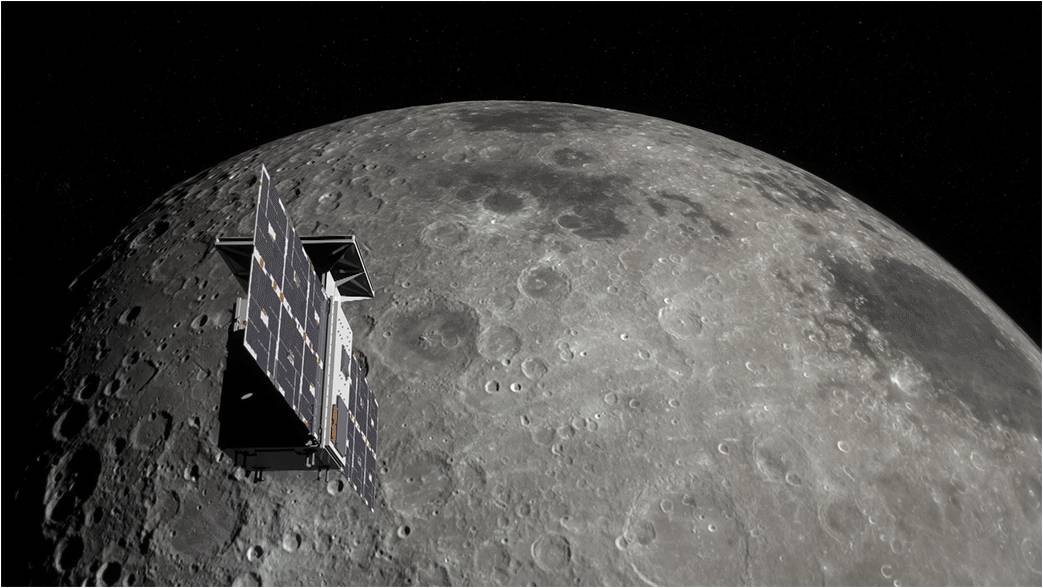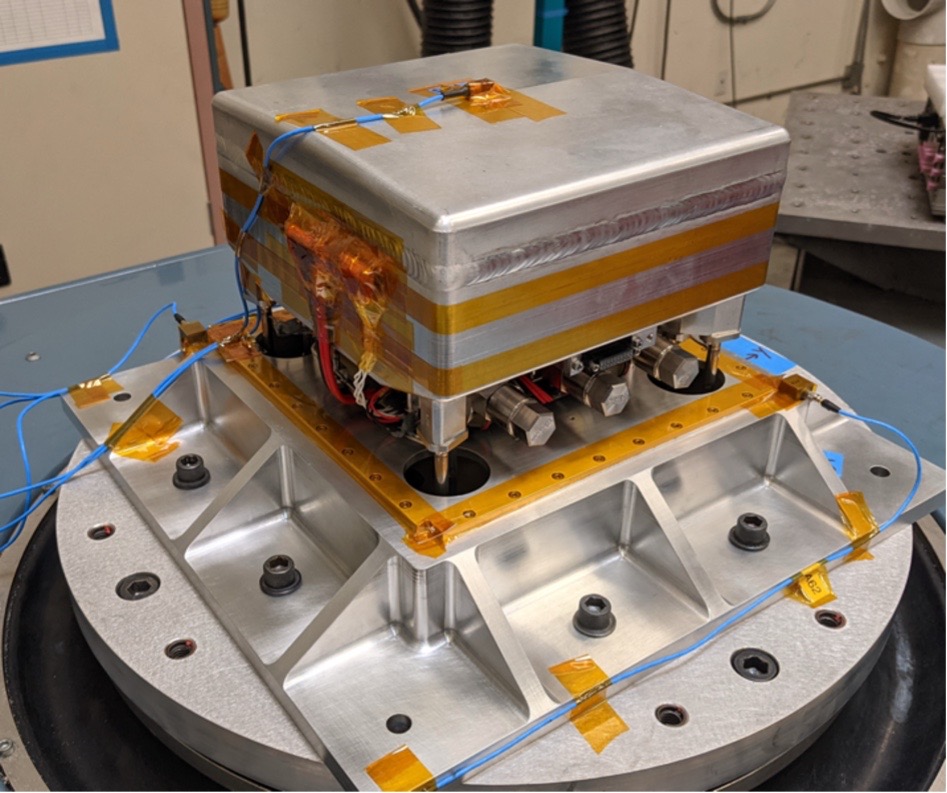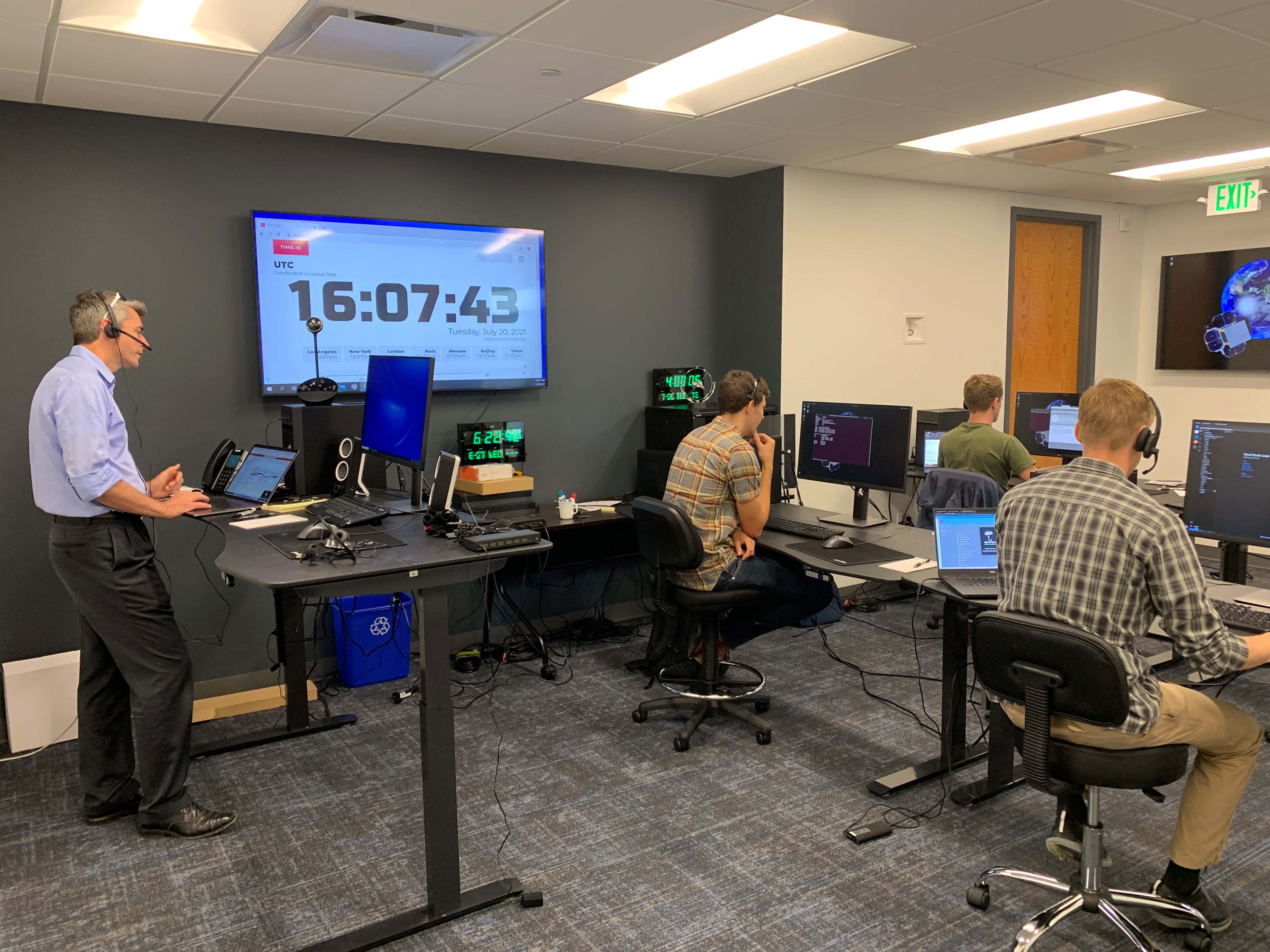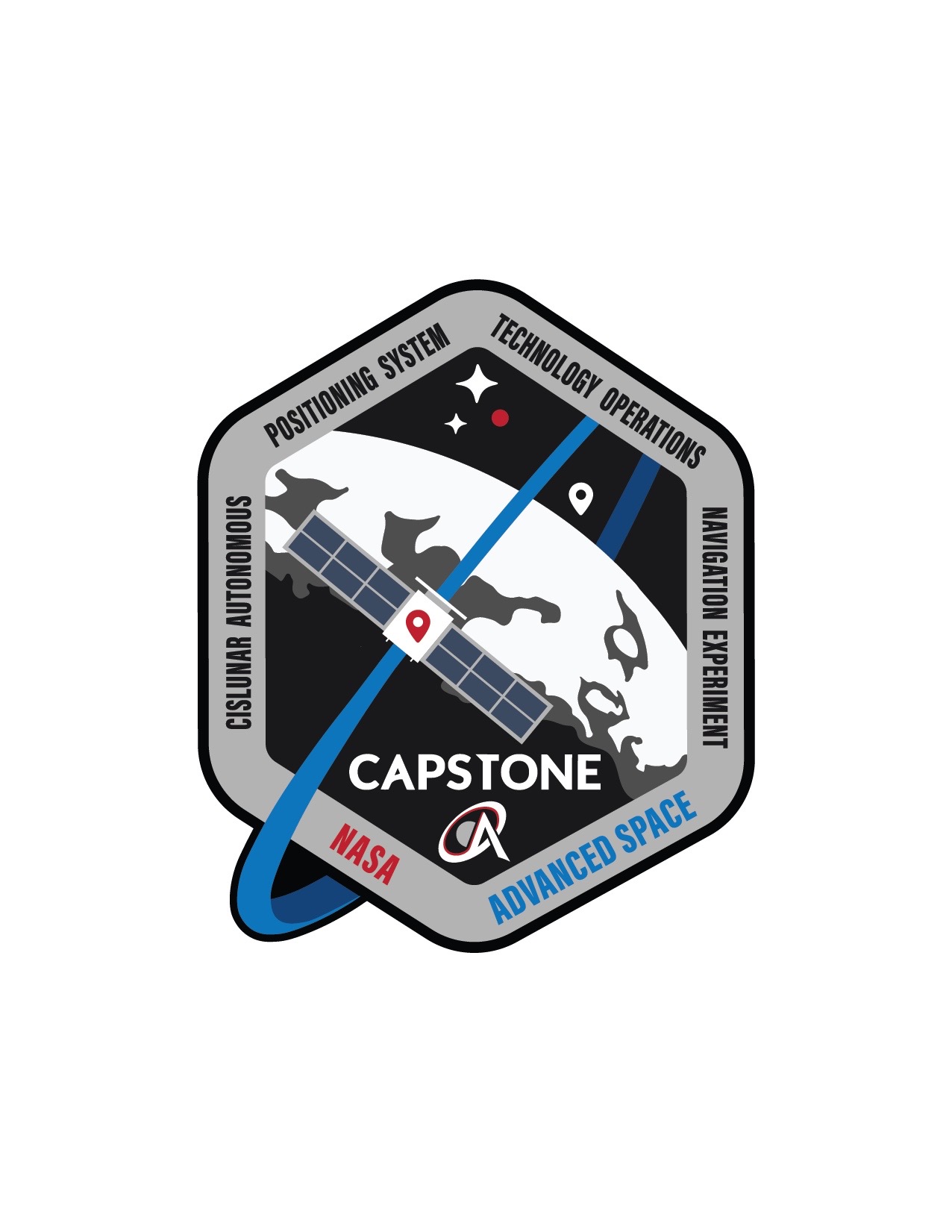CAPSTONE, a small cubesat bound for the moon, is preparing for an October launch

CAPSTONE is scheduled to launch this October from New Zealand.

NASA's plan to "reboot" human exploration of the moon will get kick-started soon by a spacecraft the size of a microwave oven.
The Cislunar Autonomous Positioning System Technology Operations and Navigation cubesat, or CAPSTONE for short, is scheduled to launch in October from New Zealand aboard a Rocket Lab Electron rocket and its Lunar Photon upper stage/spacecraft.
Tipping the scales at a modest 55 pounds (25 kilograms), CAPSTONE is no lightweight when it comes to its assignments.
Related: Rocket Lab and its Electron booster (photos)
Orbital stability
CAPSTONE's primary objective is to test and verify the calculated orbital stability of a near rectilinear halo orbit (NRHO) around the moon. That’s the same orbit scripted for NASA's Lunar Gateway, the planned small space station that will orbit the moon to provide astronauts access to the lunar surface.
The Gateway is touted as a vital component of NASA's Artemis program, which aims to establish a sustainable, long-term human presence on and around the moon by the end of the 2020s.
For its part, CAPSTONE is designed to help reduce risk for future spacecraft by validating navigation technologies and verifying the dynamics of this halo-shaped orbit.
Breaking space news, the latest updates on rocket launches, skywatching events and more!
After a three-month journey to its target destination, CAPSTONE will orbit this area around the moon for at least six months to understand the characteristics of the orbit. The NRHO provides an unhindered view of Earth in addition to coverage of the lunar south pole. CAPSTONE's seven-Earth-day-orbit will bring the probe within 1,000 miles (1,600 kilometers) of one lunar pole on its close pass and take it 43,500 miles (70,000 km) from the other pole at its most distant point.
On track
"The CAPSTONE spacecraft has been fully integrated and is currently undergoing integration testing and evaluation," said Bradley Cheetham, CEO and president of Advanced Space of Westminster, Colorado, the company that developed and will operate the spacecraft. (NASA describes CAPSTONE as "an innovative collaboration" between the space agency and private industry.)
"The integration and test plans right now are on track to be ready for launch in October," Cheetham told Space.com, underscoring the progress the mission has made thus far, particularly given the unexpected challenges of a global pandemic.
Tyvak Nano-Satellite Systems of Irvine, California, built the cubesat platform, and Stellar Exploration, Inc. of San Luis Obispo, California, is providing CAPSTONE's propulsion system.
"We have accomplished a tremendous amount in terms of developing and demonstrating the capabilities required to efficiently and effectively operate a mission to the moon," Cheetham said.
"Only two entities have ever operated a spacecraft in an Earth-moon three-body orbit — NASA and the China National Space Agency," he added. "We are preparing to be the first commercial entity and only the third organization to operate in these highly valuable orbits."
Yet another key task for CAPSTONE, Cheetham said, is testing a navigation system that gauges its position relative to NASA's Lunar Reconnaissance Orbiter (LRO), which has been studying the moon since 2009. This demonstration of spacecraft-to-spacecraft navigation services can allow future spacecraft to determine their location relative to the moon without relying exclusively on tracking from Earth.
Lunar timeline: Humanity's explorations of the moon
Commercial partnerships
Christopher Baker, NASA's Small Spacecraft Technology program executive, said that, while not realized as rapidly as the space agency had envisioned before the COVID-19 pandemic, the CAPSTONE mission will deliver valuable data and experience operating in the near rectilinear halo orbit intended for the Gateway.
"The [CAPSTONE] mission will also demonstrate novel low-energy trajectories to the moon, peer-to-peer navigation, and other future mission capabilities," Baker said.
Technologies developed for CAPSTONE, he added, are already having an impact. For example, the Stellar Exploration propulsion system for CAPSTONE was successfully used on a commercial spacecraft, and two interplanetary Rocket Lab Photons were selected for NASA's ESCAPADE Mars mission.
"Ultimately, we see the CAPSTONE mission as a vanguard of low-cost, risk-tolerant commercial partnerships for lunar exploration and beyond," said Baker.
Switch of launch sites
Originally, CAPSTONE was to head moonward from the Mid-Atlantic Regional Spaceport at NASA's Wallops Flight Facility in Virginia.
Murielle Baker, senior communications advisor for Rocket Lab, told Space.com that CAPSTONE can meet its mission requirements regardless of the launch location.
"We originally planned to launch from Launch Complex 2 but shifted the launch location to New Zealand due to additional work that is needed to certify NASA software for a flight termination system for launches from Virginia," Baker said.
Rocket Lab sees great value in deep-space exploration.
"The parallels between Antarctic exploration and lunar exploration are uncannily similar," Baker said. "At the beginning of the century, there was a race to reach the south pole. Then no one went back for 50 years — just like the moon in the '60s. Then we started building bases in Antarctica. Antarctica was opened up by technological advances — motorized vehicles, air transport and radio. And the science that gets done there is having a monumental impact on how we understand things like climate change and our impact on the planet. We are now approaching that stage with our exploration of the moon and beyond."
The moon is much the same, Murielle Baker said. "With each advance in spacecraft, robots and miniaturization, we can achieve so much with uncrewed missions like CAPSTONE. That saves time and money, making exploration to destinations like Venus and Mars much more accessible."
Leonard David is author of the book "Moon Rush: The New Space Race," published by National Geographic in May 2019. A longtime writer for Space.com, David has been reporting on the space industry for more than five decades. Follow us @Spacedotcom, Facebook.

Leonard David is an award-winning space journalist who has been reporting on space activities for more than 50 years. Currently writing as Space.com's Space Insider Columnist among his other projects, Leonard has authored numerous books on space exploration, Mars missions and more, with his latest being "Moon Rush: The New Space Race" published in 2019 by National Geographic. He also wrote "Mars: Our Future on the Red Planet" released in 2016 by National Geographic. Leonard has served as a correspondent for SpaceNews, Scientific American and Aerospace America for the AIAA. He has received many awards, including the first Ordway Award for Sustained Excellence in Spaceflight History in 2015 at the AAS Wernher von Braun Memorial Symposium. You can find out Leonard's latest project at his website and on Twitter.




